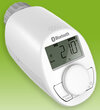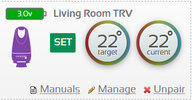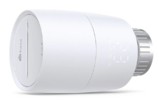We have an "Affordable Warmth" scheme here in NI whereby councils will pay to improve the heating/insulation in your house if you're on a low income.
So when I bought the house 6 years ago, they paid a contractor to put 12" insulation in the attic, replace some blown double glazing panels etc.
Part of the deal was that they'd also replace all 15 TRVs.
They don't work terribly well - turning them up or down doesn't make as much difference as you'd expect, if at all.
More worryingly, recently two of them have started leaking.
So... (deep intake of breath at the thought of the expense) if I'm going to have to get a plumber to replace two of them, would it be better to bite the bullet and get him to replace the lot?
This is the type they fitted - are they crap, or have I just been unlucky?
Any recommendations for better ones which won't completely bankrupt me?
Thanks all
PS don't know if it's relevant, but as far as know neither of the leaking valves have ever been adjusted - the under-specified boiler in the house isn't brilliant at keeping us warm, so they've always been up full...

So when I bought the house 6 years ago, they paid a contractor to put 12" insulation in the attic, replace some blown double glazing panels etc.
Part of the deal was that they'd also replace all 15 TRVs.
They don't work terribly well - turning them up or down doesn't make as much difference as you'd expect, if at all.
More worryingly, recently two of them have started leaking.
So... (deep intake of breath at the thought of the expense) if I'm going to have to get a plumber to replace two of them, would it be better to bite the bullet and get him to replace the lot?
This is the type they fitted - are they crap, or have I just been unlucky?
Any recommendations for better ones which won't completely bankrupt me?
Thanks all
PS don't know if it's relevant, but as far as know neither of the leaking valves have ever been adjusted - the under-specified boiler in the house isn't brilliant at keeping us warm, so they've always been up full...
Last edited:








